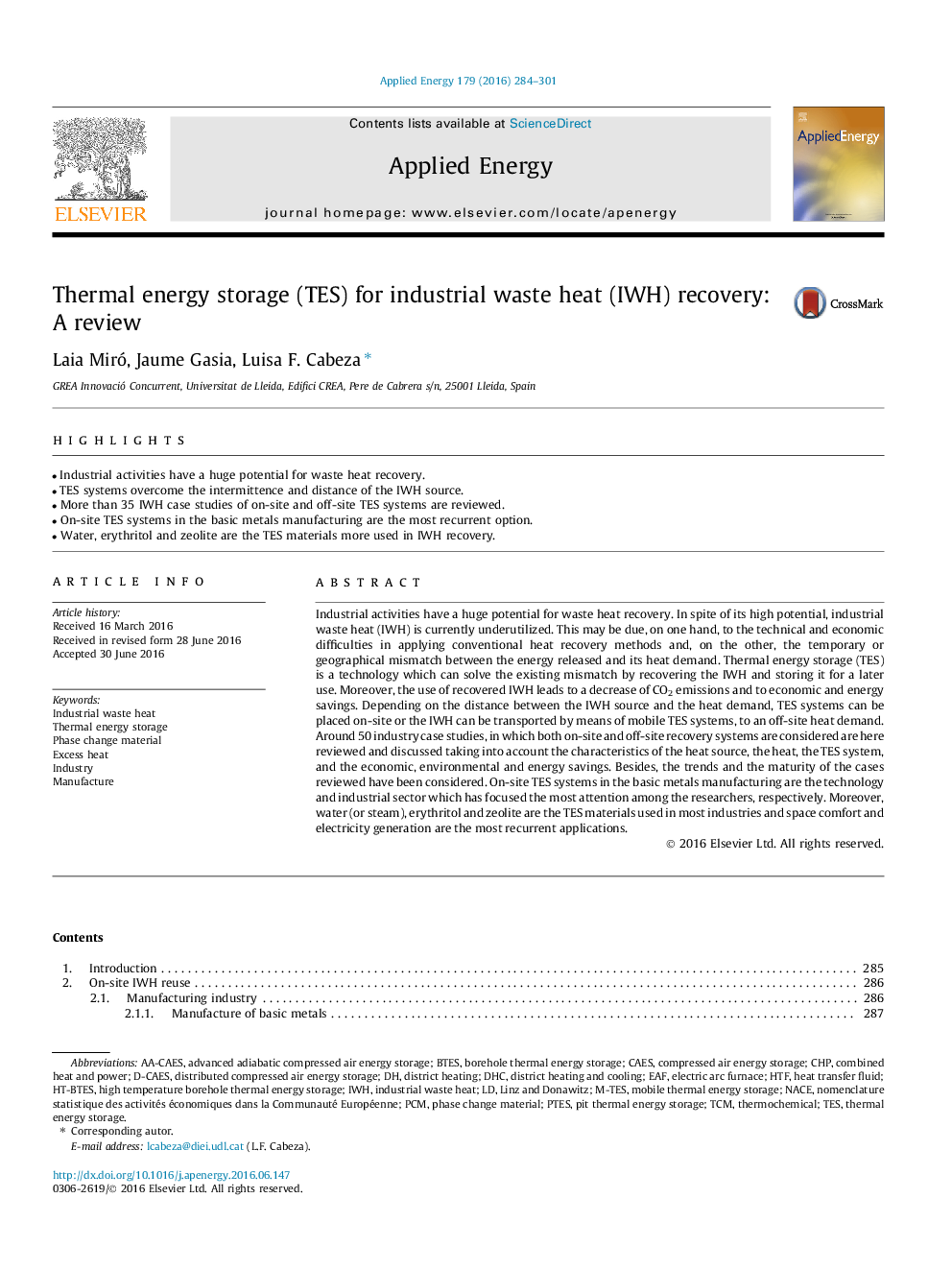| Article ID | Journal | Published Year | Pages | File Type |
|---|---|---|---|---|
| 6682110 | Applied Energy | 2016 | 18 Pages |
Abstract
Industrial activities have a huge potential for waste heat recovery. In spite of its high potential, industrial waste heat (IWH) is currently underutilized. This may be due, on one hand, to the technical and economic difficulties in applying conventional heat recovery methods and, on the other, the temporary or geographical mismatch between the energy released and its heat demand. Thermal energy storage (TES) is a technology which can solve the existing mismatch by recovering the IWH and storing it for a later use. Moreover, the use of recovered IWH leads to a decrease of CO2 emissions and to economic and energy savings. Depending on the distance between the IWH source and the heat demand, TES systems can be placed on-site or the IWH can be transported by means of mobile TES systems, to an off-site heat demand. Around 50 industry case studies, in which both on-site and off-site recovery systems are considered are here reviewed and discussed taking into account the characteristics of the heat source, the heat, the TES system, and the economic, environmental and energy savings. Besides, the trends and the maturity of the cases reviewed have been considered. On-site TES systems in the basic metals manufacturing are the technology and industrial sector which has focused the most attention among the researchers, respectively. Moreover, water (or steam), erythritol and zeolite are the TES materials used in most industries and space comfort and electricity generation are the most recurrent applications.
Keywords
Related Topics
Physical Sciences and Engineering
Energy
Energy Engineering and Power Technology
Authors
Laia Miró, Jaume Gasia, Luisa F. Cabeza,
